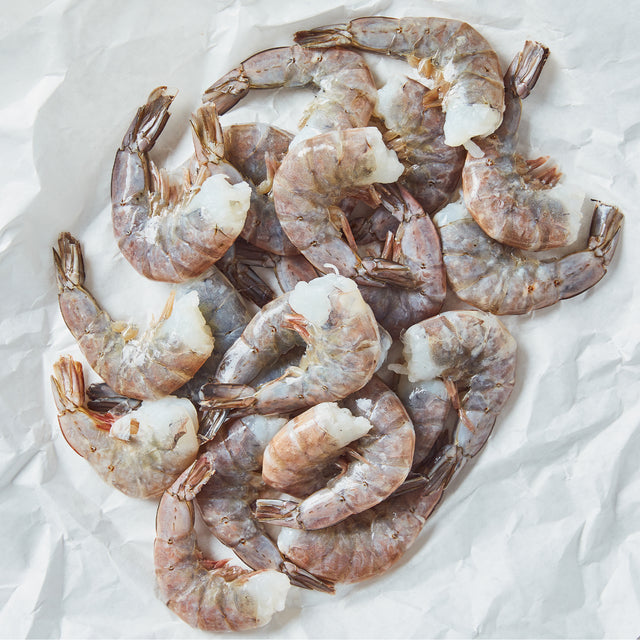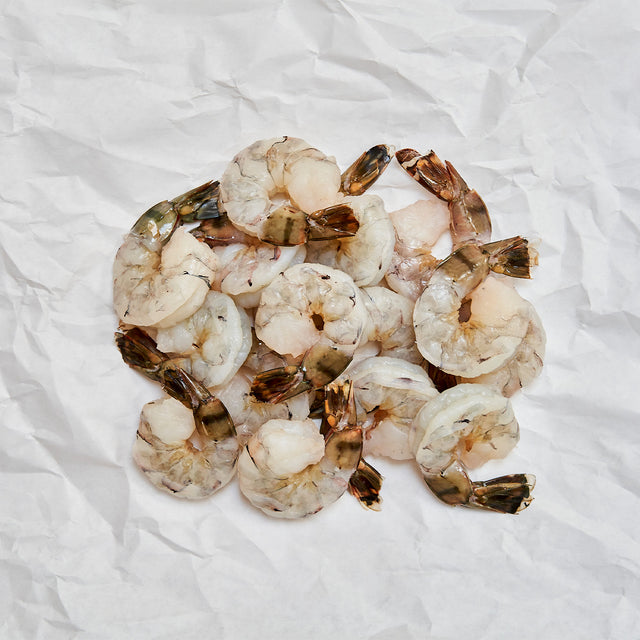As one of the most widely-appreciated types of seafood, shrimp are nutritious, easy to prepare, and generally less expensive than many of their fellow shellfish. That being said, there are still a handful of make-or-break mistakes you don’t want to risk when cooking your next seafood boil. Otherwise, this typically delicious crustacean can quickly become a lot less than appetizing.
So, before you fire up the grill, turn the stock pot on to boil, or heat up your sauté pan, read through our list of five mistakes to avoid when cooking shrimp to save yourself from a disastrous dinner outcome.
Mistake #1: Buying Shrimp With the Heads Still On
While you may think you’re buying the freshest “whole” shrimp you can find, purchasing shrimp with the head still on can dramatically affect the flavor — and not in a good way. In fact, the head of the shrimp actually contains a digestive enzyme that will turn the meat mushy if not separated from the body soon after harvesting. Unless you’re catching live shrimp and cooking it soon after death, it’s best to buy headless shrimp.
Mistake #2: Not Deveining Your Shrimp

Properly cleaned shrimp are “deveined,” which means the digestive tract — the black strip that runs along the back of the shrimp — is removed before eating. While it won’t hurt you to eat shrimp that hasn’t been deveined, this little black strip is essentially the “guts” of the shrimp and can contain undesirable flavors and textural elements, to put it lightly (i.e. sand or mud).
Though it isn’t difficult to devein your own shrimp, it is time consuming. Your best bet is to purchase shrimp that has already been deveined, or use a nifty Toadfish Shrimp Cleaner, which always does the trick!
Mistake #3: Thawing Improperly
Unless you are purchasing live shrimp, the best flavor will come from wild-caught shrimp that have been individually flash frozen. However, that also means you will need to choose a method to defrost the shrimp before cooking, which is important for both your safety and taste. First and foremost, let’s establish one ground rule: never, ever defrost shrimp in the microwave. Period.
OK, now that that’s out of the way, let’s talk about how you should defrost shrimp. In order to ensure spoilage does not occur, shrimp are best defrosted overnight in the refrigerator, ideally in a colander so they don’t sit in excess water. However, if you don’t have time to wait overnight, the second best method is to put your frozen shrimp in an airtight Ziploc bag and run under cool water — not warm or hot water — until adequately defrosted.
Mistake #4: Overcooking
Since shrimp are notorious for cooking very quickly, ending up with tough, rubbery shrimp is arguably the most common mistake.
While you can use a thermometer to tell when your shrimp reach a fully cooked temperature of 120° F, you can also gauge ‘doneness’ from the shape. Perfectly cooked shrimp are pink, opaque and curved in a “C” position. Once your shrimp have curled up into an “O” or fetal-shaped position, it’s game over. They’re overcooked.
Mistake #5: Throwing Away the Shells
Though most Western cuisine calls for shrimp to be enjoyed with the shells off, those hard outer casings actually hold a lot of flavor and are perfect for creating your own seafood stock or bisque. Rather than throwing away the shells after peeling your shrimp, save them in a Ziploc bag in the freezer for repurposing.
Ready to avoid these mistakes for your next shrimp dinner? Let’s get cooking.





